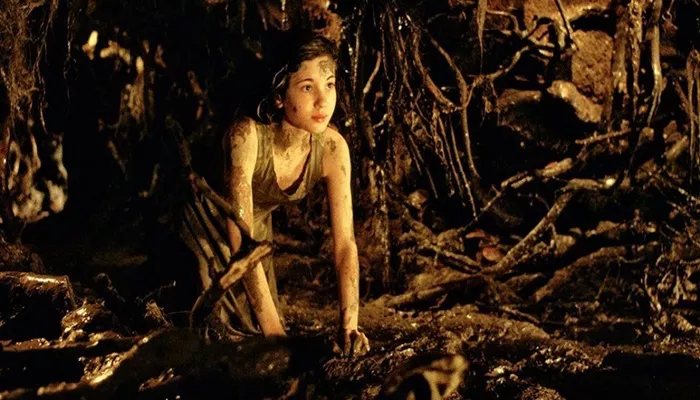“Pan’s Labyrinth,” directed by Guillermo del Toro, is a visually stunning and emotionally rich film that has captivated audiences since its release in 2006. Set in post-Civil War Spain, this dark fantasy intertwines magical realism with the harsh realities of fascism. The movie follows a young girl named Ofelia as she navigates a fantastical labyrinth and completes mysterious tasks assigned by a mythical faun. Despite its seemingly fairy tale-like premise, “Pan’s Labyrinth” carries layers of complexity, mature themes, and intense visuals that set it apart from traditional children’s fantasy films.
This article delves into the question: Is “Pan’s Labyrinth” a film meant for adults? By examining its themes, tone, visual elements, and storytelling techniques, we will uncover why this cinematic masterpiece resonates more with adult audiences and continues to stand as a testament to Guillermo del Toro’s unparalleled storytelling.
Themes That Speak to Mature Audiences
One of the defining aspects of “Pan’s Labyrinth” is its thematic depth. The film addresses a range of complex issues, many of which are better understood and appreciated by adult viewers.
The Brutality of War and Fascism
Set in 1944 Spain, “Pan’s Labyrinth” portrays the violent aftermath of the Spanish Civil War. Captain Vidal, the film’s primary antagonist, embodies the oppressive and brutal nature of fascist ideology. His relentless pursuit of control and dehumanization of others paints a grim picture of the political and social turmoil of the time. The stark depiction of war, including graphic violence and oppression, is neither sanitized nor softened, making it unsuitable for younger audiences.
Loss of Innocence
Ofelia’s journey is a metaphorical loss of innocence. She begins the story as a curious and imaginative child but is forced to confront the grim realities of her world. Her interactions with the mythical faun and her navigation through morally ambiguous choices underscore the struggles of growing up in a chaotic environment. This theme resonates deeply with adults, as it mirrors the universal experience of grappling with life’s harsh truths.
Moral Ambiguity and Sacrifice
The film challenges viewers with moral ambiguity, especially through its characters’ decisions and their consequences. Ofelia’s ultimate sacrifice at the end of the movie highlights themes of selflessness and bravery, adding an emotional weight that may be too complex for younger audiences to fully grasp.
The Dark Tone and Visual Elements
“Pan’s Labyrinth” is renowned for its dark and haunting visuals, which contribute to its appeal as an adult-oriented film.
Aesthetic and Atmosphere
Del Toro masterfully blends fantasy and horror to create a world that is both beautiful and unsettling. The labyrinth itself is mysterious and otherworldly, with intricate designs that evoke both wonder and unease. The Pale Man, one of the film’s most memorable creatures, is a grotesque and terrifying figure, representing the darker aspects of humanity and authoritarian rule.
Violence and Gore
The film does not shy away from depicting graphic violence. Scenes such as the brutal execution of rebels by Captain Vidal or the Pale Man’s gruesome feast are intense and visceral. These moments serve to emphasize the stakes and underscore the harshness of the film’s reality, making it inappropriate for younger or sensitive viewers.
A Storytelling Style That Appeals to Adults
Guillermo del Toro’s narrative approach in “Pan’s Labyrinth” sets it apart from traditional fantasy stories aimed at children.
Layered Storytelling
The film operates on two parallel planes: the harsh realities of Ofelia’s war-torn world and the enchanting yet perilous fantasy realm she explores. This duality creates a layered narrative that encourages viewers to interpret and analyze the story from multiple perspectives. Adults are more likely to appreciate the interplay between these layers and the allegorical nature of the tale.
Emotional Complexity
“Pan’s Labyrinth” delves into complex emotions such as grief, fear, hope, and resilience. The relationships between characters, particularly Ofelia and her mother, add emotional depth that resonates with audiences familiar with the challenges of family dynamics and loss.
Why Children May Struggle with the Film
While “Pan’s Labyrinth” includes fantastical elements that may initially attract younger viewers, several aspects make it unsuitable for children.
Mature Content
The film’s graphic violence, dark tone, and mature themes require a level of emotional and intellectual maturity to process. Younger viewers may find the movie disturbing or fail to grasp its deeper meanings.
Complex Symbolism
The movie is rich with symbolism, from the labyrinth as a metaphor for life’s complexities to the faun representing moral guidance. These symbolic layers may be too abstract for children to understand fully, diminishing their ability to connect with the narrative.
Reception and Legacy
“Pan’s Labyrinth” has been widely acclaimed by critics and audiences, receiving numerous awards, including three Academy Awards. Its enduring legacy lies in its ability to blend fantasy and reality in a way that challenges and captivates viewers.
Adult Audience Recognition
The film has found a strong following among adult audiences who appreciate its artistic merits and emotional depth. It is often discussed in academic and critical circles, highlighting its relevance as a sophisticated piece of cinema.
Cultural and Artistic Impact
Guillermo del Toro’s unique vision and storytelling have influenced filmmakers and artists worldwide. “Pan’s Labyrinth” is celebrated as a masterpiece of dark fantasy, inspiring discussions about the role of allegory and symbolism in modern cinema.
Conclusion
“Pan’s Labyrinth” is undeniably a film for adults. Its mature themes, dark visuals, and complex storytelling create a cinematic experience that speaks to the intellect and emotions of older audiences. While its fantasy elements may seem inviting to younger viewers, the film’s depth and intensity make it more suitable for those who can fully appreciate its layered narrative and artistic brilliance.
In answering the question, Is “Pan’s Labyrinth” for adults?, the evidence is clear: Guillermo del Toro has crafted a timeless masterpiece that challenges and enriches the minds of mature viewers.

